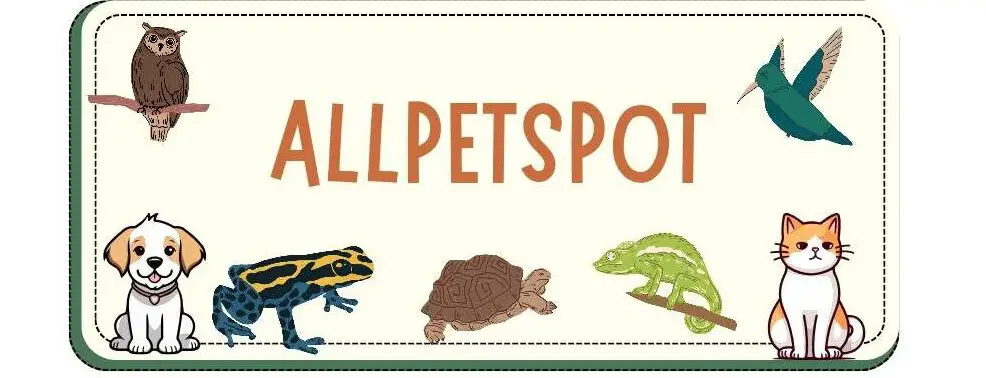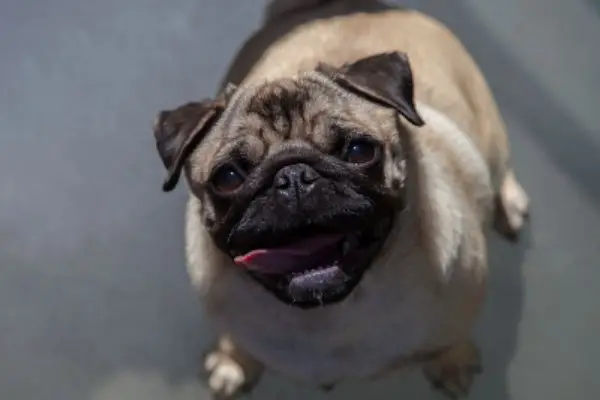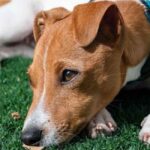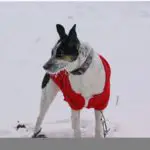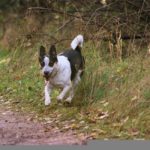Pugs are cool dogs, but the question here is that people do ask are Pugs aggressive which is exactly what this post is all about.
We will be discussing the most common things that trigger aggression in Pugs since Pugs are a non-aggressive breed of dog.
We will also discuss some ways to control, prevent or fix aggression in Pugs and a lot more.
Before we proceed, let me answer your question are Pugs aggressive in a way you can understand it.
Are Pugs Aggressive
Pugs aren’t recognized for being aggressive dogs because they were bred to be human companions, this means they are non-aggressive to other dogs and make excellent pets for families with children.
However, Pugs can become aggressive as a result of poor socialization, irritation, fear, anxiety, possessive behavior, and, most importantly, the owner’s lack of sufficient training or behavioral teaching.
Pug aggression takes the form of bullying behavior, barking, lunging, and nipping in order to gain attention or assert ownership over his domain.
A pug may have gotten his fill of unwelcome attention or just does not want anyone near his preferred area.
Aggression can also be a reaction to being alone, with your pug acting aggressively to express his feelings.
Causes Of Aggression In Pugs
Here are several reasons why your pug could be aggressive toward other dogs or humans, as well as possible solutions to the problem:
1. Pains or injuries
This is an excellent reason why your Pug is aggressive: if your dog is in pain, you may expect him to be hostile toward you or other pets.
Anxiety in Pugs is triggered by pain, which can be caused by sickness or injury, so if your Pug is acting aggressively, check to see if it is injured or unwell.
Pugs that are in pain may exhibit unusual behaviors such as barking, biting, whining, snarling, and so forth.
Discomfort may reduce their tolerance in a variety of situations, resulting in aggression in some cases.
Pain is not only uncomfortable for a pug, but it can also be highly stressful.
2. Illnesses
A condition or stage of a disease that affects the body or mind of a dog is referred to as a canine ailment.
This can be caused by ingesting contaminated food or germs, as well as injuries, insect bites, and parasite infections.
When your pug is sick and you neglect him most of the time, he becomes hostile against you, your family, and other dogs.
As a result of its condition, a sick Pug is always angry and will attack other dogs of any size.
Disease in dogs can be caused by parasites, fungus, bacteria, viruses, and other pathogens, to name a few.
This can be brought on by the environment or by eating certain foods, both of which can be prevented by maintaining excellent hygiene.
So keep an eye out for symptoms of disease in your pug and take him to the vet for treatment or routine exams.
3. Traumatic experience
According to Vetmed rescue dogs suffer from anxiety or post-traumatic stress disorder (PTSD) as a result of previous trauma.
This is a true occurrence, and it is a primary source of dog aggression.
Any dog that has been exposed to trauma in the past is at risk of developing behavioral problems.
It might be a one-time occurrence or the result of years of abuse.
Pugs that have been exposed to aggressive or abusive family life are more likely to develop emotional disorders.
As a conditioned self-protective reaction, they become afraid, and hostility develops.
4. Fear
The majority of Pugs only become violent when they perceive they are in danger, are unable to flee, and feel compelled to protect themselves.
This can happen if a Pug is forced into a corner with no way out, or if he believes a hand over his head means he’ll be slapped.
Approach Pugs with caution to prevent encouraging aggressive behavior, or better yet, let them approach you.
To assist your Pug to avoid anxiety in the future, start training and socializing him when he’s a puppy.
When dogs are threatened at any time of day or night, they become violent against other humans or animals in the area.
5. Excessive frustration
There are several reasons that contribute to a pug’s high degree of aggressiveness when he gets frustrated.
Paying less attention than normal, neglecting the dog, disrupting the dog’s food habits, and so on.
Pugs are companion dogs who are easily scared and annoyed by loud noises and frequent changes in routine.
Pugs that are frustrated are more inclined to do unexpected things, so make sure your Pug is pleased all of the time.
To solve the problem of Pugs being frustrated, you must first identify the source of the problem and eradicate it as quickly as possible.
When the Pugs want your attention, try not to ignore them. Make sure your Pugs don’t become irritated.
Other dogs or animals should not be allowed to enter the pugs’ eating area. Paying less attention than usual is not a good idea.
6. Poor socialization
If you can’t get your pug to socialize, he’ll attack a guest or other dogs one day, and you’ll label him a violent dog.
A Pug that is kept in your yard and taught without being taken on walks or mingling with other dogs, pets, or even humans is considered unsocialized.
It’s conceivable that your Pug is utterly oblivious to what’s going on in the world around him.
You can’t even tell your neighbors your Pug’s name with this form of training, since you want your Pug to be less socially aggressive.
One of the most common reasons for aggressiveness in Pugs is a lack of sufficient socialization.
7. Poor Behavior Training
This is the most thorough solution to your question about why do my pug become aggressive against other dogs.
Perhaps military personnel must teach their dogs before they begin getting orders, as inadequate training is responsible for 70% of dog aggression toward other dogs.
Therefore, in order to lessen or remove animosity against other dogs or humans, you must provide your Pug with adequate training.
Regardless of the fact that proper training lowers aggression, most dog owners assume that training is just another way to feed their pug.
8. Separation anxiety
Separation anxiety in Pugs is a condition in which a dog becomes worried and exhibits behavioral problems after being separated from its owner for a long period.
Most smaller breeds, such as Pugs, can develop separation anxiety and begin barking ceaselessly within minutes of their owners leaving.
Although little dogs are more likely to yelp, it’s unclear why some dogs experience separation anxiety while others do not.
This is one of the most prevalent issues faced by Pug owners, and it is usually caused by a lack of fundamental training.
Separation anxiety causes pugs to become aggressive and bark excessively, and they require assistance.
9. Lack of care or abuse
Aggression in Pugs is caused by a lack of attention. To properly care for your Pug, there are a few things you should do.
Instead of yelling at your Pug when he does anything wrong, correct him. Ensure that your dog is eating high-quality food.
Give your pug the attention and exercise he or she needs, and don’t forget to groom him or her.
How To Solve Pugs Aggression
Since aggression in Pugs is triggered by different things, here are some common ways to resolve, prevent or control aggression in Pugs:
1. Counter-Conditioning and desensitization
Desensitization includes training in a calm, controlled setting with a very weak version of the issue stimulus.
To reduce the impact of reactivity to other dogs, increase the distance between the dogs.
You’re also lowering our dog’s alertness, allowing him to study and listen more calmly.
This is crucial in order to create settings in which your pug may learn to be calm and relaxed in the presence of other dogs.
2. Seek advice from a skilled dog owner
This is crucial when attempting to handle the question of how to prevent your dogs from becoming violent.
If your dog gets violent, and you don’t know why, please contact an experienced owner or trainer; they can provide you with choices to assist you to stop the hostility.
As a dog owner, long-term dog training will offer you a wealth of knowledge.
You should never compare yourself to a professional dog owner; thus, if your Pug becomes too aggressive, seek the advice of a knowledgeable dog owner.
3. Avoid aggressive triggers
If you could name a specific reason for Pug’s aggressive behavior, that would be excellent.
Make their lives easier by avoiding the problem if at all feasible.
While not all aggressive Pug triggers can be avoided, there are some that can.
It’s best not to bring in any additional pets if your pug is scared when new animals join the house, for example.
4. Toys that are both interesting and interactive should be provided
The playthings you buy for your dogs will have a significant influence on their aggressiveness.
Dogs can play with a variety of toys, and you may buy up to five different ones and let your dog choose.
Keep an eye on your dog to see which play toys he is like or wants to play with more.
When dogs play with toys, they appear to be happier, as seen by their bouncing up and down.
5. Keep your pug occupied at all times
This may appear paradoxical, but it works; all you need is a nutritious diet.
If you want to help your Pug become less aggressive, don’t mess with his eating schedule.
Make a strategy for yourself and follow through with it.
If you change your Pug’s feeding schedule, stick to it until it no longer serves you and your Pug’s needs.
Changing your Pug’s feeding schedule will make him feel abandoned and unloved. Dogs, like humans, have feelings.
6. Start obedience Training
Although obedience training may appear to be a burden, trust me when I say it is well worth it.
When you have a perfectly behaved Pug by your side, you’ll thank your prior self for putting in the work.
Simple instructions and behavior training are used in obedience training. It’s intended to offer you more control over your dog’s behavior as the owner.
Finally, this offers a safer environment for dog owners, canines, and the general public who will come into contact with the dog on a daily basis.
Types of aggression in Pugs
- Protective Aggression
- Possessive Aggression
- Territorial Aggression
- Pain-Related Aggression
- Redirected Aggression
- Fear Aggression
- Sexual Aggression
- Social Aggression
Signs of aggression in Pugs
The most typical symptoms of aggression in Pugs include the following:
- A lot of snapping
- Biting
- Excessive nipping
- Snarling
- Temporary increase in size
- Body posture that is stiff
- Excessive growling
- Teeth bared
- Barking a lot
Check out this post on Can Pugs Be Left Alone: 6 Dangers & 10 Helpful Tips
How To Live With An Aggressive Pug
If your Pug is aggressive toward other dogs or humans, avoid the following:
- Don’t yell at your pug since this will just reinforce his bad behavior.
- When there are other dogs around, never allow your pug off the leash.
- It’s not a good idea to remain silent or do nothing to help your dog, therefore look for answers.
- Never, even as a last option, strike your pug; instead, offer positive reinforcement or simply walk away.
- Do not punish your pug for being aggressive toward other dogs; after all, you caused it by failing to socialize your puppy on a regular basis.
- Continue to desensitize and countercondition your pug.
Read more: Are Pugs Good With Kids (6 Helpful Tips)
Conclusion
You can always use the good personality features of a pug to learn how to handle aggressiveness.
Praise and rewards for positive conduct will help him to become less hostile.
If you respond to your pug’s angry behavior by placing him in time-out in his crate or in a different room, away from the center of the action, he will immediately change his attitude.
Pugs love food, and you may quickly distract your pug from destructive behavior by giving him his favorite treat.
However, make sure you execute it correctly so he doesn’t believe he’s being rewarded for his bad conduct.
When you catch your pug in aggressive behavior, say a strong “no,” giving him time to realize that what he’s doing isn’t appropriate.
Then, to divert his attention, give him a reward. I strongly hope your question are Pugs aggressive was resolved!
